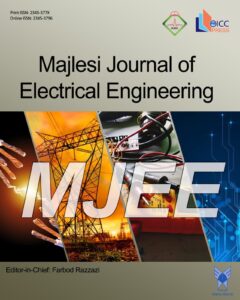Walsh Transform-based Image Compression for Less Memory Usage and High Speed Transfer
Authors
Abstract
The rising use of digital imaging applications has recently boosted the demand for different image compressing algorithms. Picture compression is used to reduce unnecessary information from an image. We can store the vital information of a picture via image compression, reducing storage space, time, and transmission bandwidth. Although the results of lossy compression reconstruction are not similar to the original image the compression technique is essential to save a large amount of memory and increase the speed of transmission, especially when dealing with images. In this research a database of different five images was considered namely; woman, car, Lenna, peppers, and house with sizes of 33, 47, 40, 44, and 51 Kb respectively. The compression was fulfilled by Walsh transform with four compression ratios 5%, 10%, 15%, and 20%. The Walsh transform performed well and gave the highest average PSNR of 29.1904 during a 10% of compression ratio.
Keywords
- Image Compression
- Peak signal-to-noise ratio (PSNR)
- Mean Square Error (MSE)
- Database Image
- Walsh Hadamard Transform (WHT)
References
[1] K.G. Beauchamp, “Applications of Walsh and Related Functions, With an Introduction to Sequency Theory”, Academic Press, New York, 1984.
[2] D. Salomon, “Introduction to Data Compression”, Springer- Verlag London Limited. pp. 144-155, 2008.
[3] K.Veeraswamy, “Designing Quantization Table for Hadamard Transform based on Human Visual System for Image Compression,” ICGST-GVIP Journal, Volume 7, Issue 3, November 2007.
[4] V. Orest and W. Mircea, “Improving SOM vector quantization for image compression with Walsh-Hadamard transform”, ISBN: 978-960-474-314-8.
[5] Sunil Malviya, Neelesh Gupta and Vibhanshu Shirvastava, “2D-Discrete Walsh Wavelet Transform for Image Compression with Arithmetic Coding”, 4th ICCCNT-2013.
[6] Y. Asriningtias, F. Saputro, and E. Setyaningsih, “Wavelet-Walsh, Quantization and Fractal Coding Transformation Methods to Minimize Image Data Size,” vol. 2, no. 2, pp. 28–34, 2018.
[7] B. V.kostrov, A. G.svirina, S. I.babaev, and A. Bastrychkin, “Computing Systems,” no. June, pp. 100–105, 2017.
[8] Diana Andrushia and R. Thangarjan, “Saliency-based image compression using Walsh–Hadamard Transform (WHT),” Lect. Notes Comput. Vis. Biomech., vol. 25, pp. 21–42, 2018, doi: 10.1007/978-3-319-61316-1_2.
[9] V. Kostrov, S. I. Babaev, A. Bastrychkin, A. I. Baranchikov, and A. N. Kolesenkov, “Image compression based on Walsh spectra,” 13th Int. Conf. ELEKTRO 2020, ELEKTRO 2020 - Proc., vol. 2020-May, pp. 1–4, 2020, doi: 10.1109/ELEKTRO49696.2020.9130274.
[10] S. E. Ghrare and A. R. Khobaiz, “Digital image compression using Block Truncation Coding and Walsh Hadamard Transform hybrid technique,” I4CT 2014 - 1st Int. Conf. Comput. Commun. Control Technol. Proc., no. I4ct, pp. 477–480, 2014, doi: 10.1109/I4CT.2014.6914230.
[11] R. Patel, S. Katiyar, and K. Arora, “An improved image compression technique using huffman coding and FFT,” Commun. Comput. Inf. Sci., vol. 628 CCIS, pp. 54–61, 2016, doi: 10.1007/978-981-10-3433-6_7.



